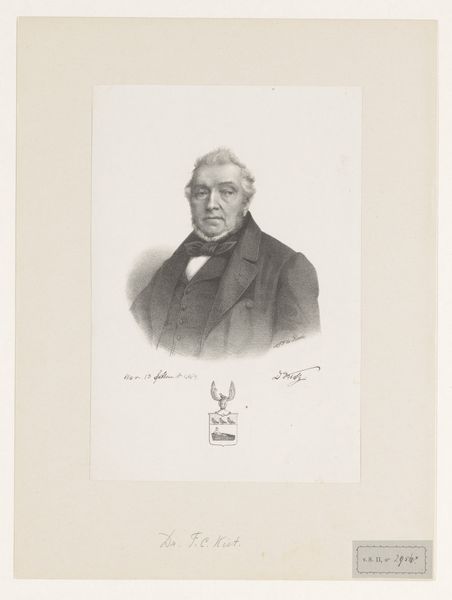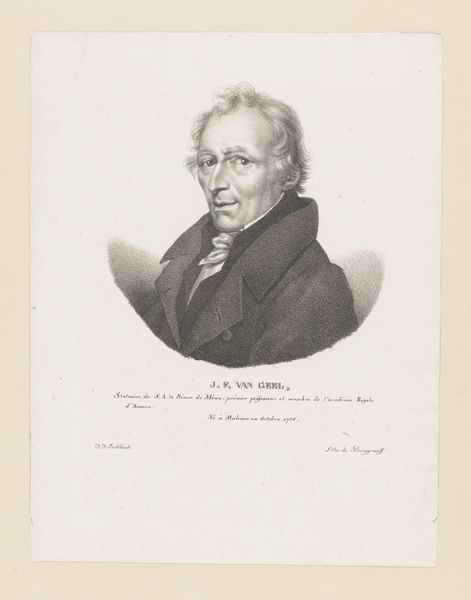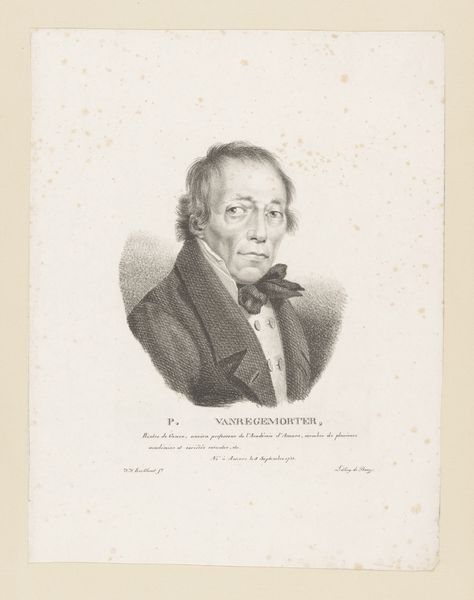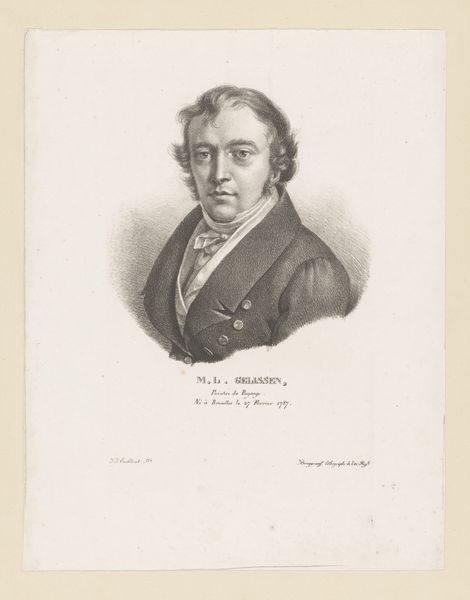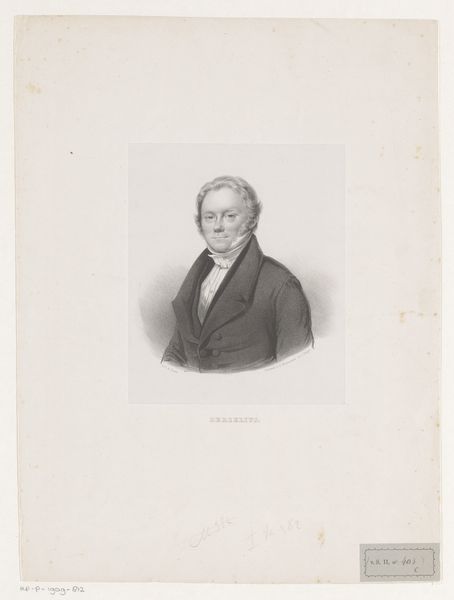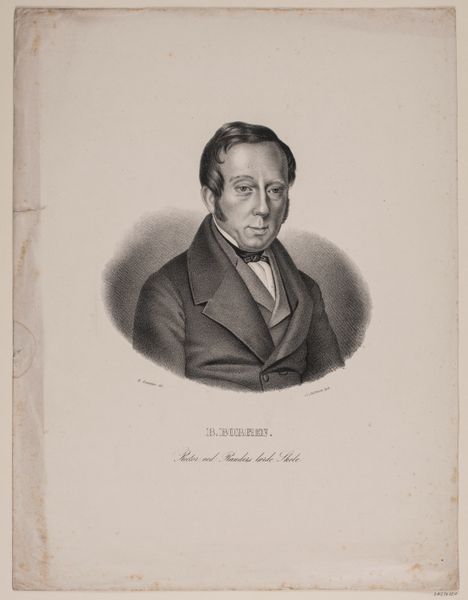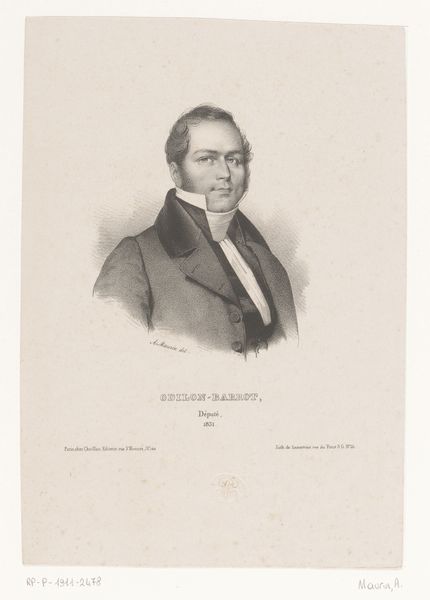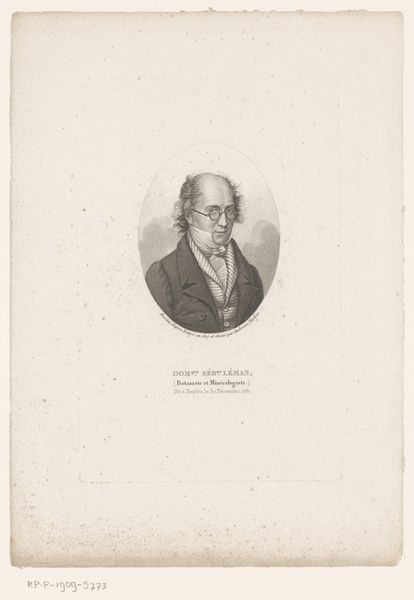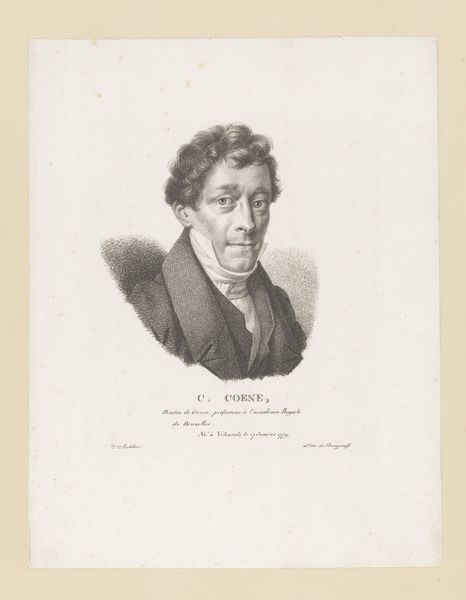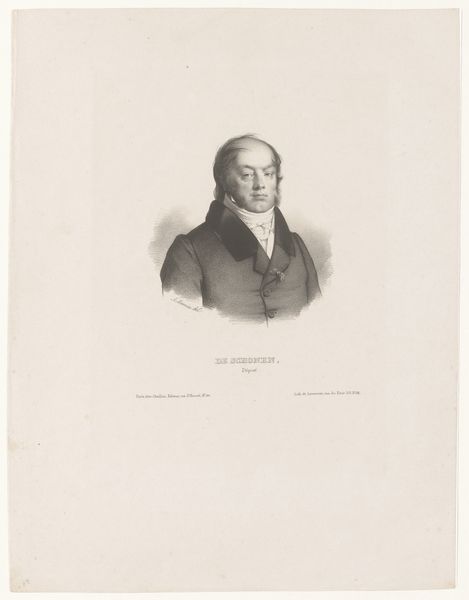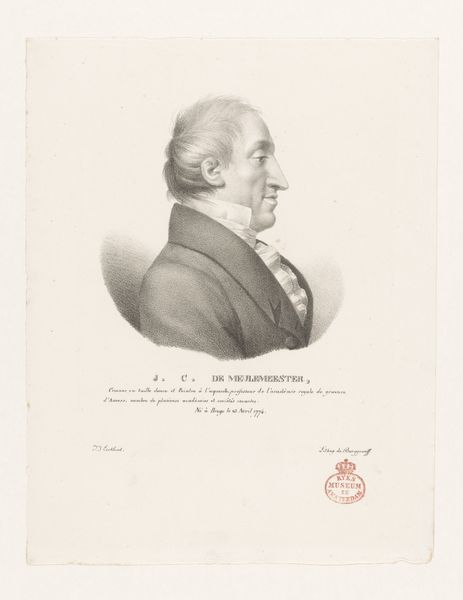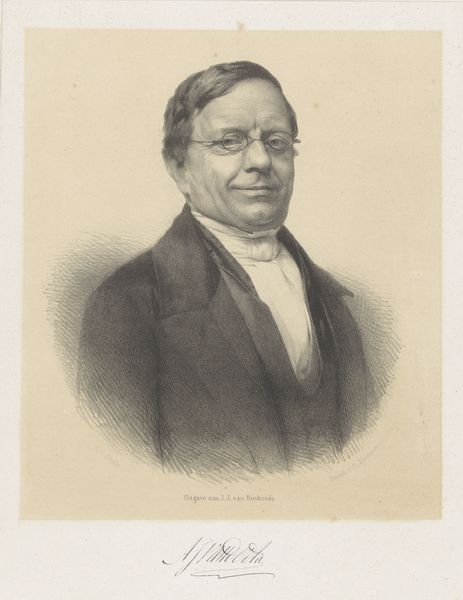
#
portrait
#
photo of handprinted image
#
picture layout
#
light pencil work
#
pastel soft colours
#
photo restoration
#
expressing emotion
#
light coloured
#
joyful generate happy emotion
#
photo layout
#
soft and bright colour
Dimensions: height 300 mm, width 235 mm
Copyright: Rijks Museum: Open Domain
Guillaume Philidor Van den Burggraaff made this print of Michel-Joseph Speeckaert using lithography, a technique that democratized image-making in the 19th century. Lithography relies on the simple principle that oil and water don't mix. The artist draws on a smooth stone or metal plate with a greasy crayon, then applies water. The water adheres to the blank areas, while the greasy ink sticks to the drawn image. When paper is pressed against the plate, the image transfers. This process allows for detailed, tonal images, as you can see in the subtle shading of Speeckaert's face and clothing. The rise of lithography coincided with the industrial revolution, offering a relatively inexpensive way to reproduce images for mass consumption. This print, with its attention to detail and likeness, speaks to the growing importance of portraiture in a burgeoning middle class. It also highlights the changing role of the artist, who was now able to create images for a wider audience beyond the traditional elite. This shift underscores how artistic techniques are deeply entwined with social and economic changes.
Comments
No comments
Be the first to comment and join the conversation on the ultimate creative platform.
